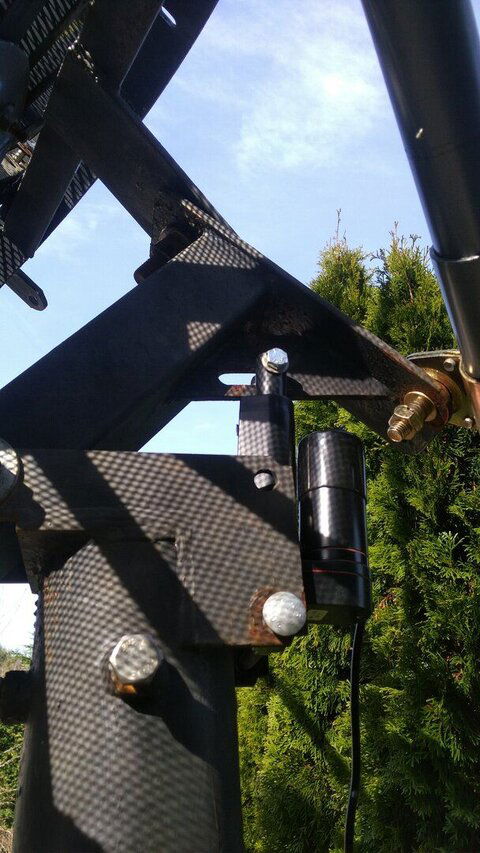my understanding is that a polar mount with only one axis (so, like what most of us have), can only approximately track the arc as we are tracking a ring from an elevated position that is not centered in that ring.
100% correct is not possible, indeed.
When using the so-called
modified motor angles, the pointing error is reduced to some hundredths of a degree.
In fact, here I calculated a difference of 0.04 degrees (though I didn't test overall pointing error of the modified angles, but something else, there; but I think that error will be in the same range):
Dovercat, I've made a diagram of a traditionally set up polar mount (situated in London) so you (and anyone else) can easily see what we are talking about. (snigger) :p

www.satellites.co.uk
(The modified angles mean a forward axis tilt of about 0.6 degrees at our latitudes, and a corresponding correction of the declination offset angle of the dish; as opposed to the 'traditional motor angles'.)
Using USALS, it might also be an idea to enter the
modified latitude value in your receiver.
That would bring an advantage of maximum 0.07 degrees (so about 1 USALS angle-unit):
see
USALS Notebook
(I've never tested if the USALS calculations normally truncate the resulting angle, or that they do a proper rounding; when I make a diseqc-reader, that would be one of the first things that I would want to check; out of curiousity.)
Greetz,
A33








